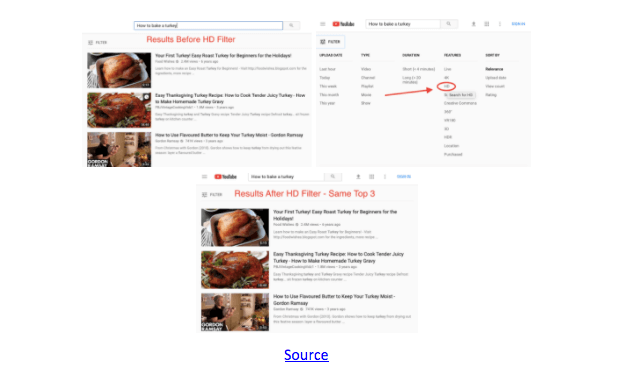Video content is revolutionizing the customer experience for many reasons. Video marketing is highly engaging because it can be used at virtually every stage of the customer journey.
It puts an immediate face and voice in front of a brand during the introductory phases of a marketing campaign and supports a smooth transition down the sales funnel.
Online video marketing is also beneficial for building a social presence and ranking well on the SERPs – as social platforms and search engines are favoring video content since many consumers prefer it over text articles and blog posts. Scaling video is also becoming easier as more websites and platforms are integrating this content and things like live streaming are becoming more accessible.
If your marketing strategy is focused on incorporating more video content in the upcoming year, there are some very important strategies that you should follow for using video to increase conversion rates and click through rates to your landing page.
Use Video Marketing to Illustrate Pain Points
Every piece of your video content needs to serve a purpose. The inspiration and ideation process should start with customer pain points to actively start making improvements on the CX.
When you are trying to promote or sell videos, there needs to be an emotional interest that resonates with potential customers on a personal level and clearly provides something beneficial.
Explainer videos are a great option here to actively address pain points your target audience may be experiencing, such as how to use a product properly or show how your business can make a measurable positive impact on the customer’s daily life.
For example, Dollar Shave Club famously released some humorous explainer videos via their YouTube channel to explain why customers should choose their subscription service.
The video addresses what is wrong with the razor industry (razors are expensive, low quality, have extra features that are pointless, and so on). Then they address these pain points with an affordable alternative that is sent right to your home.
Obviously, this simple explainer worked, as the video currently has over 25 million views on YouTube and has been awarded one of the best brand videos in recent years.
Take a look at the most common questions, concerns, and complaints that your customer service department receives to gain inspiration.
Most consumers would rather watch a quick video than read an article when they’re searching for instructions or solutions, so be sure to keep your content short and sweet while still hitting on the primary pain points that customers experience.
Incorporate Psychological Triggers
Psychological triggers are everywhere in the marketing world. If you want to improve the customer experience while subconsciously encouraging them to convert, you need to understand what these triggers are and how to use them appropriately.
One powerful psychological trigger that many marketers try to use is emotion. Nike stirs up feelings like inspiration and power through their ads, while the unforgettable ASPCA ads use pictures of puppies and kittens (along with a highly emotional song) to make customers feel compassionate and giving.
Brand recognition is created by tapping into these feelings, and it is a great way to spur both impulse purchases and long-term brand loyalty.
A great way to create a lasting impact on your customers is through video storytelling.
Don’t just talk about your product, service, or business model. Show viewers how other customers are using it to improve their lives. Share behind-the-scenes footage of what goes into the making of your product. Give your customers something to be emotionally invested in and use this to build meaningful connections.
Invest in Quality Video Production
On nearly every platform these days, quality plays a role in how video content is ranked. Search engines tend to rank high-definition videos above others. Furthermore, the quality of the video will have a direct link to the customer experience, another factor that search engines certainly take into consideration.

Fuzzy quality can be an instant turn-off to consumers; one report found that one out of four viewers would be more likely to disengage with a brand video that had a low-quality definition. Unfortunately, the camera on your mobile device won’t always cut it when it comes to producing professional-grade brand videos.
Investing in a nice digital video recorder or HD camera can actually pay off in the long run. Keep the iPhone camera strictly for quick social media video uploads or live streams and opt for high-def recordings for longer form video content.
Adapt to the Channels Your Customers are More Likely to Use
As you (hopefully) know by now, your customers’ preferences can (and will) change as time goes on. This is true of how and where they are consuming your video content, too.
Using your analytics, social media monitoring, and public databases, you need to understand where the bulk of your target viewers consume video content. From here, focus on the types of videos (format, length, instructional, live, how-to, Q&A, etc.) that perform best on each channel.
Benefit Cosmetics does a great job of switching up their content types based on the platform. For instance, their YouTube channel focuses on how to use every single product individually with in-depth how-to videos. On the other hand, their Facebook page uses live streaming to create interactive experiences with beauty influencers and ambassadors while they do full makeup tutorials.
Conclusion
As the video marketing trend continues to grow at exponential rates, many businesses are searching for unique ways to incorporate this highly visual tactic into their marketing strategy. The statistics around video marketing’s effectiveness are truly staggering; it is no wonder why its use and popularity continue to grow.
Video content can be used for far more powerful things that just advertising your business or product. It can transform the experience that your customer has with your brand – no matter where or how they are interacting.
How will you use this type of visual content to engage your audience?


